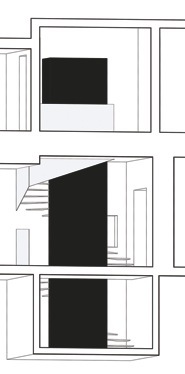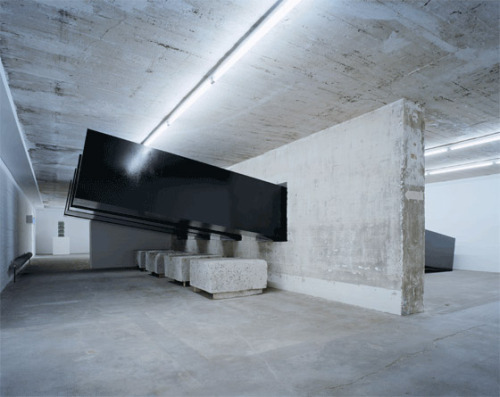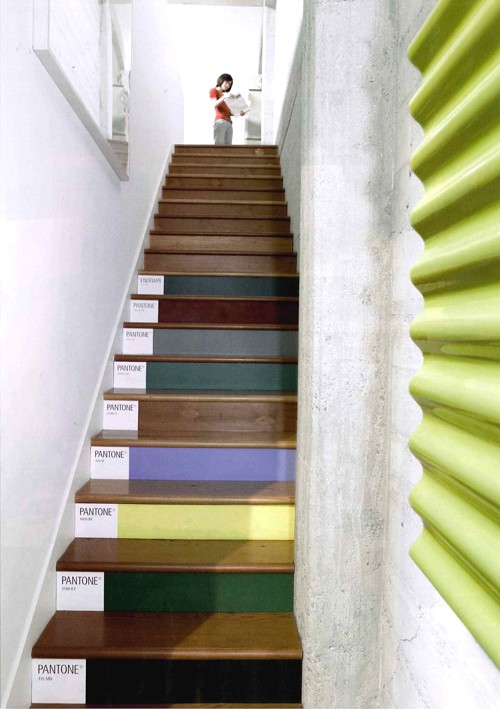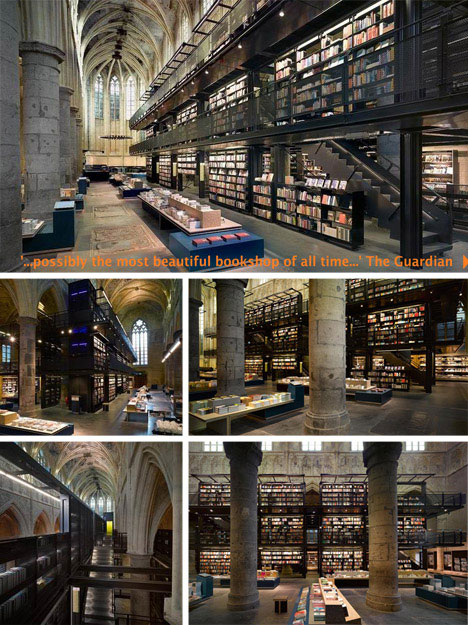Monday, October 31, 2011
Thursday, October 27, 2011
Wednesday, October 26, 2011
structural thinking
[Image: "Glass Weed" from Super-Natural Garden by Simone Ferracina; Ferracina will be speaking at Thrilling Wonder Stories 3 at Studio-X NYC].
thanks to: BLDGBLOG
thanks to: BLDGBLOG
Tuesday, October 25, 2011
Evolution 51
A project by: Jorge Hrdina Architects 2011
Foro boario Grosseto 1957
Arch. Ing. Mario Luzzetti
Lilypad House |
Arch. Ing. Mario Luzzetti
Saturday, October 22, 2011
Friday, October 21, 2011
Thursday, October 20, 2011
Sunday, October 16, 2011
At home in Disneyland
Billy my bookcase: At home in Disneyland:
“If there was no Burj Dubai, no Palm, no World, would anyone be speaking of Dubai today?”
In this concept the Financial Times has explained the meaning of Dubai. This city exists thanks to its CEO Sheikh Mohammed Al-Maktoum, who said that he would become the number one in the world and, for this purpose, he is trying to create a proper Disneyland for rich people.
In fact, seen from Google Earth, Dubai looks like a theme park: the World and the Palm are ridiculously suggestive. This sensation is well shown in “Evil Paradise” where Mike Davis describes what he saw during his landing in Dubai: “As the plane slowly banks toward the desert mainland, you gasp at the even more improbable vision ahead. Out of a chrome forest of skyscrapers soars a new Tower of Babel”. He is talking about the Burj Dubai, the 2600 feet height tower: the icon of Dubai, the icon of a new world.
In fact, Dubai is a decadent “toy” built to show the power and the richness as demonstration of the social status. All social classes are well distinct in Dubai and there is not better city to show it and, at the same time, the difference between the higher and the lower class is extremely big, in the city where the rights are proportional with money. More money you own and more rights you will have.
Dubai has taken the throne of the U.S.A. as icon of the capitalism.
However, can we call Dubai a city? Can anyone feel at home here? The Sheikh Mohammed Al-Maktoum has created a theme park, but can he create a “real city”?
Maybe.
If we take as example the most artificial city, Las Vegas, we could find even there people that feel at home. Dave Hickey in his book “Air Guitar” shows how it is possible to have that sensation even in Las Vegas. Moreover, Las Vegas has been define by D. Hickey as a democratic city where everyone is at the same level: “If Bruce Willis and Shanney Doherty just want to get their feet wet, they shoot dice with the rest of us”. Nevertheless, D.Hickey said that in that city “money is just money” and everybody can ascend from “Food to Cocktail”.
Maybe it will be the same in Dubai in the future.
Money has created Las Vegas and it could generate a new proper city: Dubai.
As we have seen, I could feel at home in Disneyland too.
Friday, October 14, 2011
Thursday, October 13, 2011
MATERIAL RULES
MATERIAL RULES
(with a nod to Michael Pollan)
- If they won’t tell you what’s in it, you probably don’t want what’s in it
- Consult your nose - if it stinks, don’t use it
- Just because almost anything can kill you doesn’t mean our building products should
- If it starts as hazardous waste, you probably don’t want it in your house
- If it is cheap it probably has hidden costs
- Question the generation of hazardous waste rather than where to put it your building
- Use materials made from substances you can imagine in their raw or natural state
- Avoid materials that are pretending to be something they are not
- Question materials that make health claims
- Use carbohydrate based materials when you can
- Pay more, use less
- Regard space age materials with skepticism
(with a nod to Michael Pollan)
- If they won’t tell you what’s in it, you probably don’t want what’s in it
- Consult your nose - if it stinks, don’t use it
- Just because almost anything can kill you doesn’t mean our building products should
- If it starts as hazardous waste, you probably don’t want it in your house
- If it is cheap it probably has hidden costs
- Question the generation of hazardous waste rather than where to put it your building
- Use materials made from substances you can imagine in their raw or natural state
- Avoid materials that are pretending to be something they are not
- Question materials that make health claims
- Use carbohydrate based materials when you can
- Pay more, use less
- Regard space age materials with skepticism
Wednesday, October 12, 2011
Tuesday, October 11, 2011
The question is: why?
A second Stirling prize for Hadid
Zaha Hadid, the Iraqi-born British architect whose designs have struggled until now to gain acceptance in the UK, last night won the country's top architecture award for her first major work here. Her Evelyn Grace Academy, a secondary school specialising in sport in Brixton, south London, was awarded the £20,000 Riba Stirling Prize.
The Academy was the surprise winner: what has come to be known as "The Pringle", the saddle-shaped velodrome with the world's fastest cycling track, designed by Hopkins Architects for the London 2012 Olympics, had been tipped as favourite to receive the accolade.
Ms Hadid's £37.5m school building, made of glass and steel, is squeezed into a site just one-sixth of the average school site, with a 100-metre running track taking pupils to the front door. The president of Riba (the Royal Institute of British Architects), Angela Brady, who chaired the judges, said: "This is a design that literally makes kids run to get into school in the morning. I'd like to think all schools could have that effect."
Ms Hadid said: "Schools are among the first examples of architecture that everyone experiences and have a profound impact on all children as they grow up. I am delighted it has been so well received by all its students and staff."
It is the second year in a row that Zaha Hadid Architects has been awarded the prize, and the first time that a school has won. Last year, the firm won the award for its MAXXI museum of 21st-century arts in Rome.
Despite being one of the world's leading architects, Hadid – whose staff wore T-shirts bearing the legend: "Would they call me a diva if I were a guy?" at the opening of the Cincinnati Contemporary Arts Center in 2003 – had not completed a major building in the UK until this year. Her 1994 competition-winning design for the Cardiff Bay Opera House was abandoned by the Millennium Commission after opposition to the design from local lobbyists. Previously, her firm had designed a Maggie's Centre in Scotland, and, since the academy was completed, the Riverside Museum in Glasgow has also opened. Construction has also finished at Hadid's Aquatics Centre housing the London 2012 Olympic swimming pool and diving centre.
The other finalists for the prize this year were the Royal Shakespeare and Swan Theatres, in Stratford-upon-Avon, by Bennetts Associates; Museum Folkwang in Essen, Germany, by David Chipperfield Architects; office space The Angel Building in Islington, north London, from Allford Hall Monaghan Morris; and the Irish language, arts and culture centre An Gaelaras, in Derry, Northern Ireland, by architect O'Donnell + Tuomey.
The winner, announced last night at the Magna Science Adventure Centre in Rotherham, which itself won the Riba Stirling Prize in 2001, will be broadcast on a special edition of BBC 2's The Culture Show today.
¥€$
¥€$:
Nowadays, we are living in a world where the system of media has transformed famous artists, business man and architects into “stars”. People like Zaha Hadid and many others, have been conseidered contemporary myths of Architecture and magazines like “Intelligent Life” in which we can find the article of Jonathan Meades that pushes the general opinion in that direction.
Moreover, like film-stars, those Architects enjoy this status and they continue to play this role. The British Architect Zaha Hadid iso ne of the easiest examples of this phenomenon and, as we have readed in J. Meades’s article, Z. Hadid is a “starchitect”.
She does not care about the context because it is synonymous of compromise. She said that computers are not just tools, exactly the opposit of the general opinion: she wants to be different. In fact, she wants to be an actress in any occasion, different from everybody else: this is her role.
In my opinion, Zaha Hadid is following the “theory of the ¥€$” (¥en, €uro and $ Dollar) in which money is the only inspiration and the way to design. As a result, Architecture loses its soul, and represents only a promotion of the politician or of the rich man who wants to show his power through the spectacular building and nothing else.
Those Architects create “colossal building” like “colossal film” in the cinema industry, without soul, without the Genius Loci and who lives these edifices will never enjoy them. These constructions are not Architecture, they are U.F.O. landed in the middle of cities.
Subscribe to:
Posts (Atom)
























